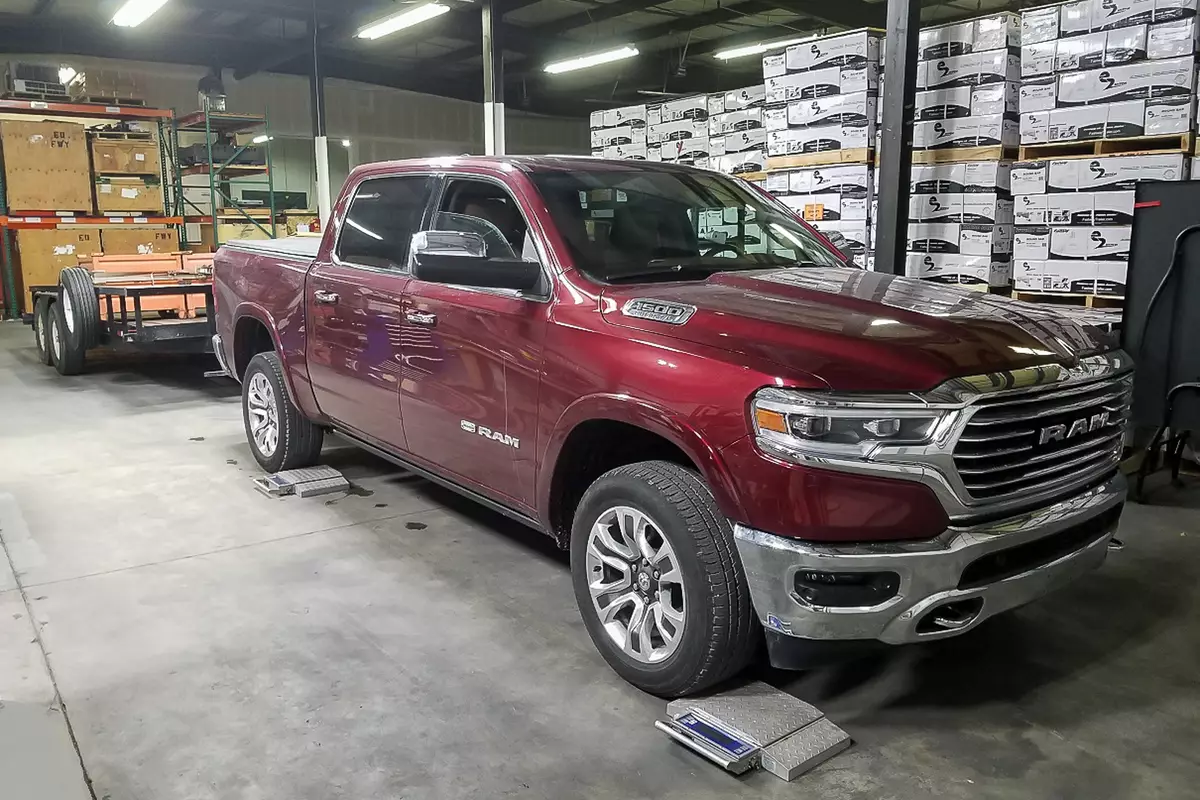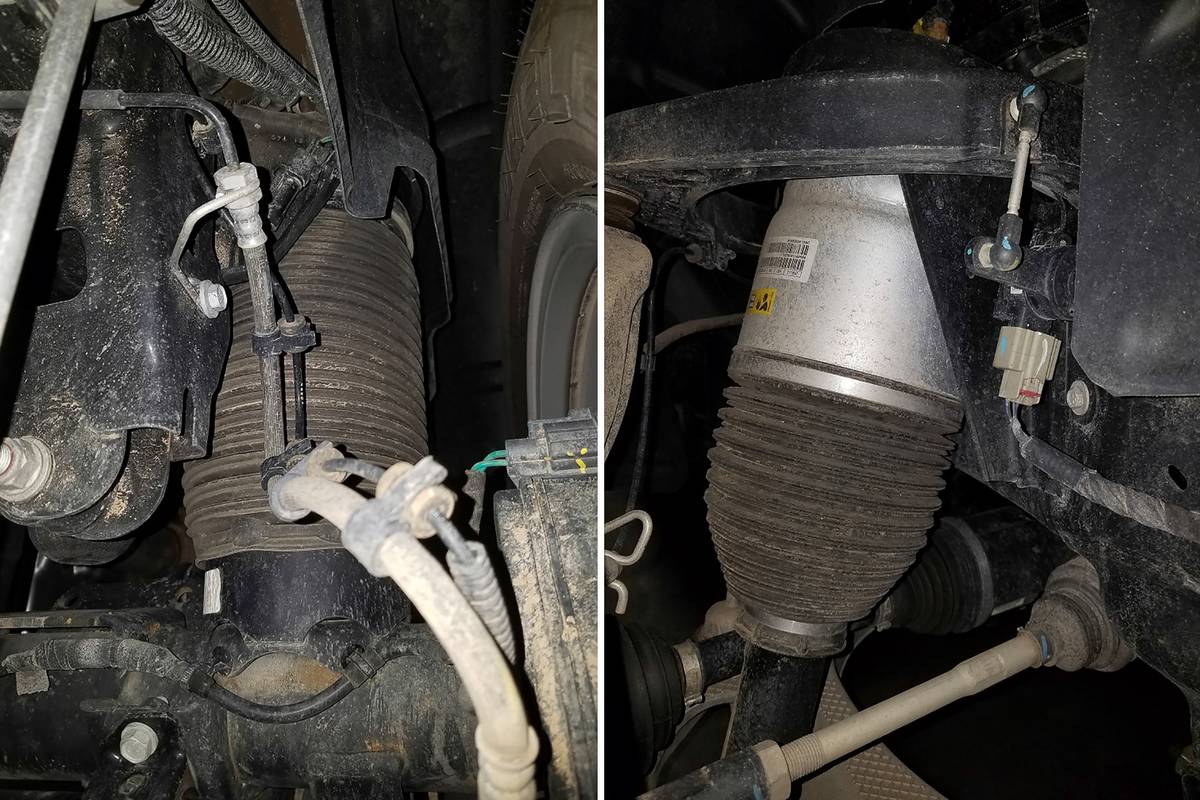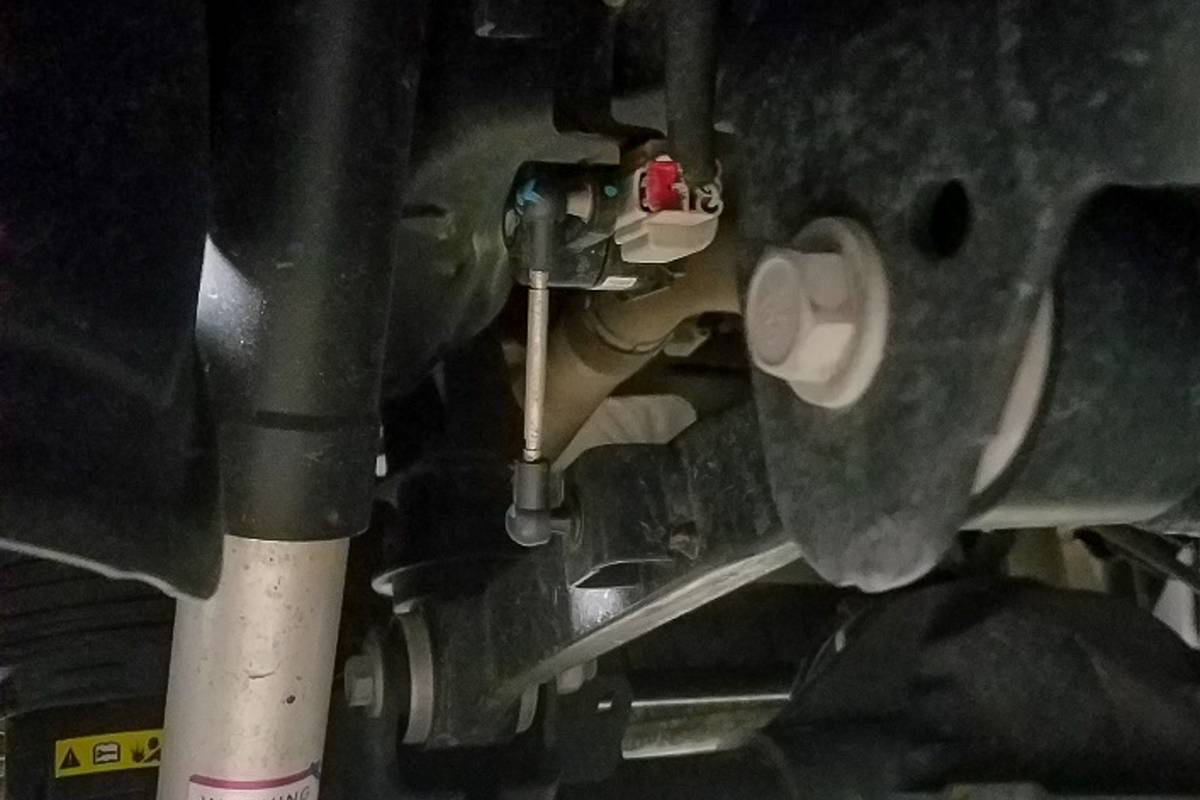2019 Ram 1500 With Air Suspension: What You Need to Know Before Towing

Modern pickup trucks offer incredible features for smoother, quieter and more capable trucks, like the 2019 Ram 1500 with optional four-corner air suspension, but having modern features also means the old way of doing things may not suffice anymore. While setting up weight distribution isn’t difficult with normal suspension, everything changes with auto-leveling like Ram’s air suspension. Here is what we learned after working with the engineers at Equal-i-zer Hitch to properly set up an Equal-i-zer weight distribution hitch and test trailer to tow behind a Ram with air suspension.
What Is a Weight Distribution Hitch and How Does It Work?
When connecting a trailer onto a pickup truck’s receiver at the rear bumper, the rear axle of the truck becomes the pivot point of a lever system. The tongue weight of the trailer lifts some weight off the front axle that effectively gets transferred to the rear axle. Weight distribution hitches form a bridge between the pickup truck and trailer, transferring some of the trailer tongue weight off the pickup truck’s rear axle to the trailer axles. Having this weight back on the front axle helps level the ride, smooth braking and increase steering response.
How to Effectively Measure Weight Distribution

The best way to measure proper weight distribution is to park the truck and trailer on level ground and put a wheel scale under at least the front wheels, if not under the four or six wheels of the pickup truck. A normal truck scale could work as well, but only place the front wheels of the tow vehicle on the scale.
Related: More Towing and Hauling News
Three weight measurements are taken to determine how much weight is being distributed to the front axle to redistribute load (also called front axle load restoration) to the front after connecting a weight distribution system.
- Measurement A: The uncoupled pickup’s front wheels are weighed and recorded
- Measurement B: Then the trailer is connected to the truck without weight distribution and weight is taken
- Measurement C: Scale weight with the weight distribution system connected
Typically, measurement C should be at least midway between measurements A and B, if not a little closer to A. If the weight distribution amount isn’t in the desired range, then the hitch is adjusted for more or less distribution depending on what is needed, and the process is repeated.
Most end users and trailer dealers don’t have access to wheel scales, so they perform the same steps as above, but they measure the height to a point on the front fender from the ground passing directly through the center of the front axle, instead of weighing each wheel. For example:
- Measurement A, uncoupled: 30 inches
- Measurement B, coupled without weight distribution: 32 inches
- Measurement C, coupled with weight distribution: 30.5 inches
This would be a front axle load restoration amount of 75 percent. The trailer coupled without weight distribution raised the front 2 inches, and with weight distribution lowered it 1.5 inches, or 75 percent of the way to its base, uncoupled height.
Weight Distribution Setup for Auto-Leveling Suspensions Like the Ram

During our testing with the Ram’s auto leveling suspension, we found that all three measurements stayed very close to the same, even with the truck turned off. To overcome this, the suspension self-leveling height adjustment needs to be turned off during hitch setup.
Most vehicle manufacturers with auto-leveling suspension have a way to temporarily disable the auto-leveling suspension. Some vehicles only make adjustments while the engine is running. For those vehicles, weight distribution should be set up with the vehicle off. Others, like the Ram 1500, have a mode that will stop the suspension from adjusting. For Ram, it’s called Tire/Jack mode.
Related Video:
When trying various procedures and using wheel scales for the most accurate measurements, we found that following Ram’s recommended method in the owner’s manual provided the most consistent results. A truncated version of Ram’s process is as follows:
- Set the suspension to normal height
- Turn the adjustable suspension off (place the suspension in Tire/Jack mode) and take measurement A at the front fender
- Attach trailer to truck without weight distribution and take measurement B at the front fender
- Install the weight distribution portion of the hitch and take measurement C at the front fender
- Calculate weight distribution where C should equal ((B-A)/3)+A; this equates to 66 percent weight distribution before the truck levels itself
- Turn air suspension on (turn Tire/Jack mode off)
- Truck can now be driven
When following this process for our particular truck and trailer setup, we noticed that 20 to 25 percent of the weight distribution was lost after the auto-leveling suspension was turned on and the truck adjusted itself. This essentially put the weight distribution at around 40 percent. One final note in the Ram owner’s manual is to set the weight distribution at the hitch manufacturer’s recommended settings. Equal-i-zer hitch recommends setting its weight distribution hitches to restore at least 50 percent of the weight lost back onto the front axle. More may be necessary to help with stability and sway control depending on the specific truck and trailer setup. Equal-i-zer also recommends never exceeding 100 percent weight distribution or putting more weight on the front axle than the truck had before the trailer was attached.

We highly recommend, if at all possible, using wheel scales to get the best weight distribution setup for vehicles with four-corner adjustable suspension. For those — meaning most of us — who don’t have access to wheel scales, follow what the vehicle owner’s manual says for the initial setup and make adjustments, if needed, but always stay within the hitch manufacturer recommendations and weight ratings of the pickup truck, trailer and towing equipment. Doing this should provide for a safe and worry-free drive.
Cars.com’s Editorial department is your source for automotive news and reviews. In line with Cars.com’s long-standing ethics policy, editors and reviewers don’t accept gifts or free trips from automakers. The Editorial department is independent of Cars.com’s advertising, sales and sponsored content departments.
Featured stories

Should Tesla Model Y Owners Get the New 2026?


2026 Nissan Leaf Review: Value Victory


